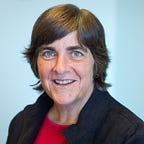A Rewarding and Smooth-Running Week in Colombia
After a successful four days of teaching in Ecuador, I flew to Bogotá, Colombia, where a similar schedule awaited me with a few add-ons, hosted by Pontificia Universidad Javeriana, or simply Javeriana.
Like Ecuador, Colombia boasts a large number and variety of universities, but unlike Ecuador it’s clear two of them are considered top of the heap: Javeriana, and nearby Universidas de los Andes. It’s also clear that there’s a healthy rivalry between the two; I’ve heard them described as “the Stanford and Berkeley of Colombia,” though I’m not sure which is which. Both of them are private but large, around 20,000 students each, while the nearby flagship public university has more than double that number.
Although Javeriana hosted my visit, they put out the welcome mat to other institutions and undertook a detailed selection process. The data science participants ended up coming from 12 universities and three high schools — some public and some private; some in Bogotá and some in other cities or towns. Each nomination needed to be endorsed by a school principal or dean. The result was a group who were highly diverse but unwaveringly committed and engaged in the topics and the work.
Other aspects of the visit were also carefully planned and well executed. The data science room was excellent, with two very large screens — I hadn’t appreciated before how helpful good projection can be for students to follow along when we’re working together with data tools. The university even set up a laptop at each seat to make sure everyone’s computing environment would be adequate. My terrific host, Lope Hugo Barrero Solano, has been Javeriana’s Dean of Engineering since about the same time I took on that role at Stanford, so we enjoyed comparing notes.
My schedule allowed a free day between the Monday-Wednesday data science short-course and the Friday design thinking workshop. The day turned out to be fairly busy, and very rewarding. I had a pleasant meeting with the president (“rector”) of Javeriana, who is both an academic and a priest, and Lope arranged a lunch with deans of engineering from several universities. In between, we drove across town to visit with high school students in a lower-income part of the city. The visit was hosted by a Jesuit high school, but included students from two nearby schools as well. The students were so attentive and excited, eager to practice their English and just bursting with questions.
Speaking of high school students, I had an eye-opening lunch with two female high-schoolers participating in the data science course. One of them explained that she’d recently switched schools: At her previous one she’d been bullied relentlessly for being a smart girl interested in robotics. She seemed to take it all in stride and retain her confidence — impressive, but a bit sad nonetheless.
Hmm, what is new to say about design thinking? The participants always have fun and learn new ways of collaborating and attacking problems. By now the workshops are a smooth-running operation right down to my design-thinking Spotify playlist for background music. As in Ecuador, the selected topic for the day was improving local transportation — it was hard for me to tell if the present situation is worse in Bogotá than in Quito, but it’s certainly not good in either place.
In Bogotá I decided to stay at a well-reviewed local hotel in a neighborhood close to the university, rather than a business-style hotel in a more upscale neighborhood, which would have required a taxi to and from the university each day as I did in Quito. Everyone in Bogotá is hyper-conscious of personal safety — it’s probably with some justification, although the scale of concern may in part be a holdover from Colombia’s truly violent and dangerous past. My host got nervous when I walked around the neighborhood alone; I made sure to move quickly and confidently and I didn’t go out after dark. In truth I became quite fond of the neighborhood after a full week there. But for my teaching in Monterrey, Mexico in September, my host there told me in no uncertain terms that I should opt for the far-away business hotel approach.
I wasn’t quite as busy every evening in Bogotá as I was in Quito, perhaps because the data science material was settling down. But I still typically had takeout or delivered dinner in my hotel room to catch up on work (not to mention those safety concerns). I planned my travel with two free weekend days in Bogotá, one each before and after the teaching. On the first one I rented a bicycle — a brand-new teal-colored single-speed city cruiser — and participated in Ciclovía de Bogotá: Every Sunday, 75 miles of city streets are closed to traffic and literally a million residents get out for a ride, skate, jog, or walk. I covered 35 miles on that cruiser and it was so much fun! On the other free day I booked a hiking trip through the cloud-forest to Cascada La Chorrera, the highest waterfall in Colombia. During the week I found a few opportunities to see the main Bogotá sights and enjoy local food. All in all it was a terrific stop in every respect. Viva la odyssey!
